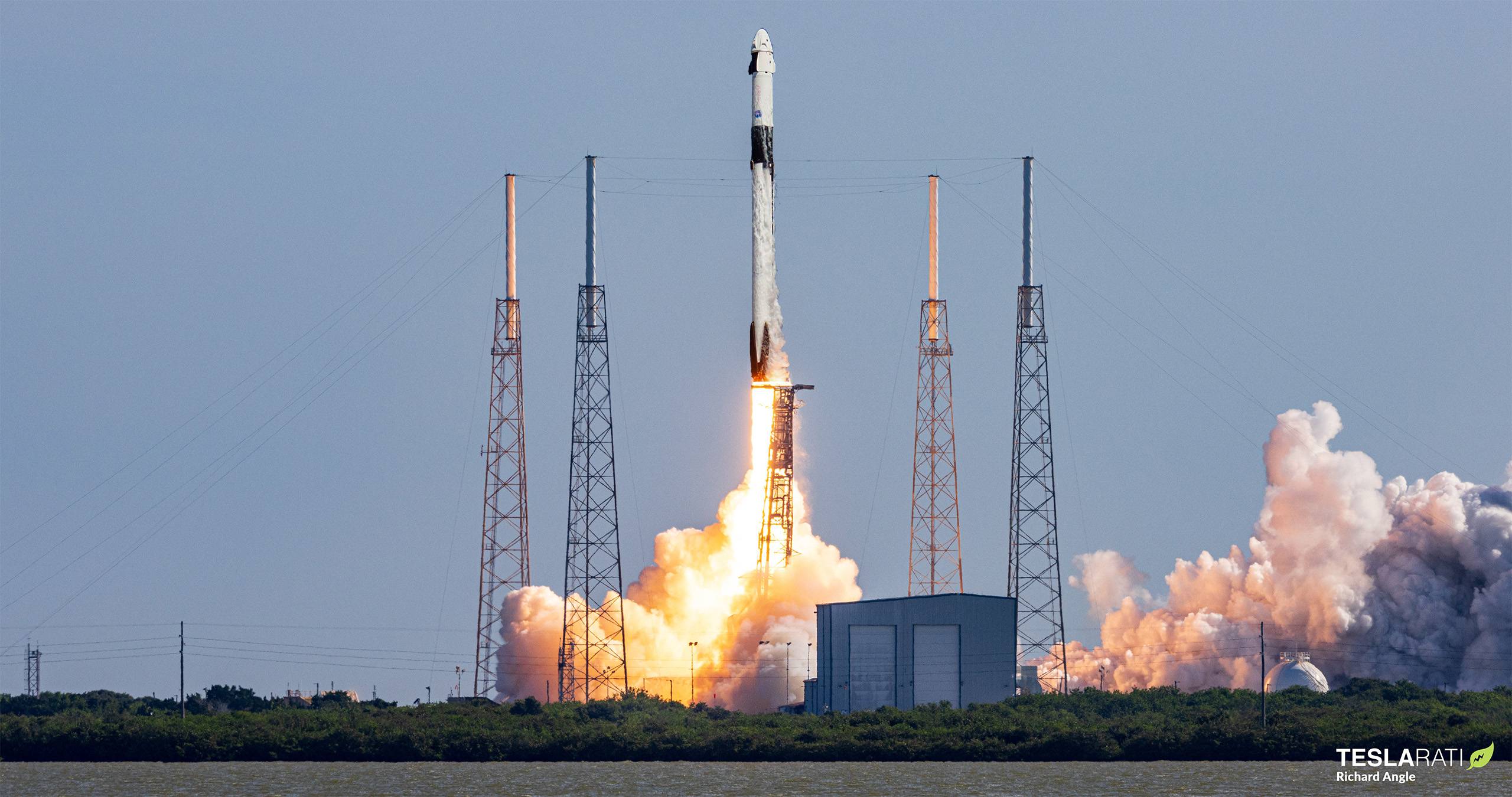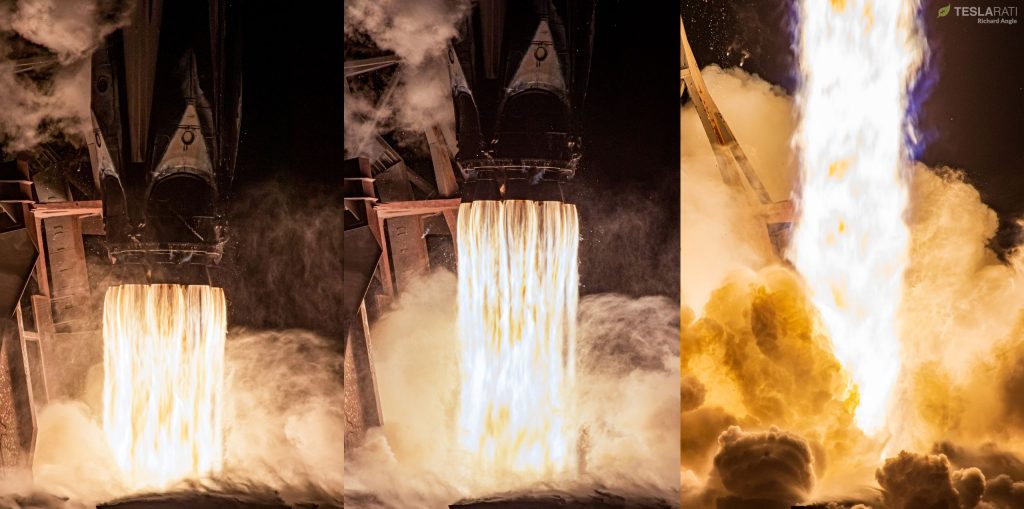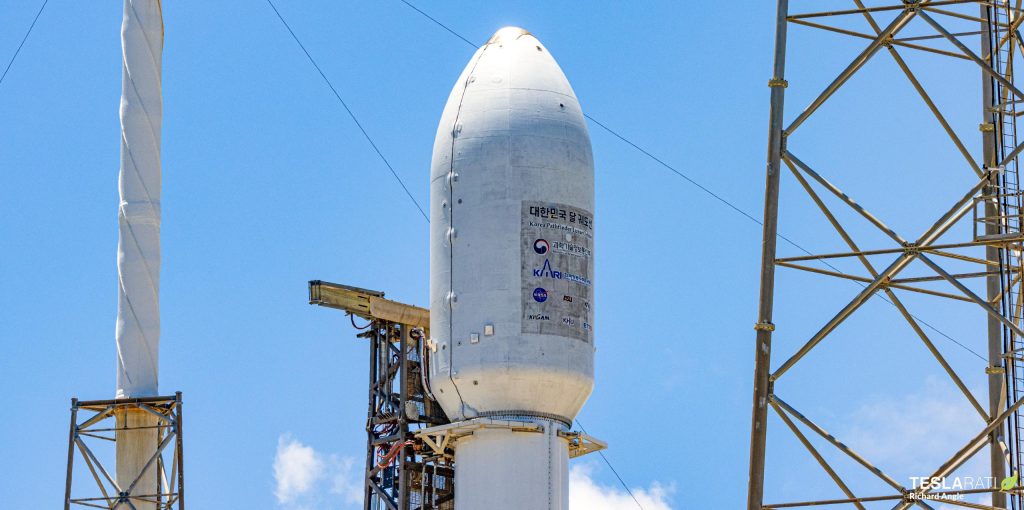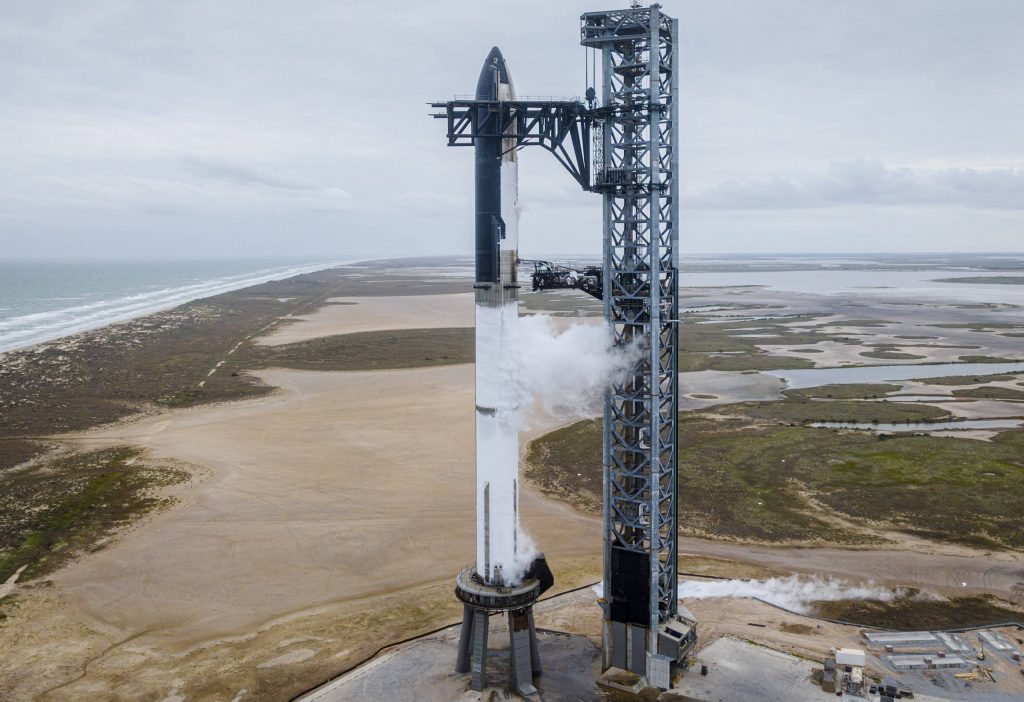

News
SpaceX’s backup Dragon launch pad on track for 2023 debut
SpaceX has begun building a backup launch pad for its Cargo and Crew Dragon spacecraft and says the facility could be ready for use as early as fall 2023.
Reuters first revealed those plans in June 2022. They arose because NASA reportedly told SpaceX it was worried that the company’s first Florida Starship launch site – colocated at the only pad currently able to launch SpaceX Dragon spacecraft – could add too much risk. In September 2022, NASA and SpaceX acknowledged plans to modify LC-40 for Dragon launches and indicated that both parties had decided to proceed.
Four months later, SpaceX and NASA have provided another press conference update. Officials confirmed that construction is already partially underway and reported that LC-40 could be ready to support its first Dragon launch less than a year from now.
The update that's rolling out to the fleet makes full use of the front and rear steering travel to minimize turning circle. In this case a reduction of 1.6 feet just over the air— Wes (@wmorrill3) April 16, 2024
Because Boeing’s comparable Starliner capsule is years behind schedule and still unqualified to launch humans, NASA has relied almost exclusively on SpaceX’s Crew Dragon to launch its astronauts to the International Space Station (ISS) since 2020. Starliner should be ready to supplement Crew Dragon’s operational astronaut launches by the end of 2023 or early 2024, alleviating some of that pressure.
NASA, however, chose to develop two spacecraft to guarantee that one spacecraft would likely be available if the other was grounded for any reason. Adding the possibility that a giant, new, experimental rocket (Starship) could potentially halt all SpaceX Dragon launches in one fell swoop was apparently one bridge too many for the agency.

SpaceX’s answer to the problem was about as simple, elegant, and cheap as possible. The company has two operational Falcon launch pads in Florida, and it proposed to modify the second pad. SpaceX’s Cape Canaveral Space Force Station (CCSFS) LC-40 pad is located on a secure military base and has an even longer history of successful Falcon 9 launches than Pad 39A. It also appears that its layout will allow SpaceX to add a Dragon access tower without requiring major redesigns or months of downtime.
LC-40 is SpaceX’s most productive launch pad by far, and the company intends to launch up to 100 times in 2023. It’s thus crucial that the pad remains as active as possible as it’s modified – a major challenge. A combination of luck and the fact that the launch pad is already operational is the only reason that’s possible.
Modifying SpaceX’s busiest pad
In theory, SpaceX needs to do relatively little to enable Dragon launches out of LC-40. Dragon spacecraft are processed for flight at a separate facility and only head to the pad once they’re ready to be attached to a Falcon 9 rocket. The biggest modification LC-40 needs is a launch tower, but SpaceX ironically has experience building giant towers in sections – and offsite – through Starship.
LC-40’s Dragon access tower requires far less complex plumbing and should be smaller and easier to prefabricate and assemble. Regulatory documents indicate that the new tower will stand 81 meters (265 feet) tall – almost a third shorter than the 110-meter-tall tower SpaceX modified at Pad 39A for the same purpose. LC-40 will also need a swinging access arm to connect the tower to Dragon’s hatch. That arm can also be constructed offsite, further reducing the amount of downtime required.

The most disruptive modifications may involve LC-40’s transporter/erector (T/E) device, which rolls Falcon 9 out to the pad, raises it vertical, holds it down with giant clamps; and hosts a maze of plumbing that fuels, pressurizes, and powers the rocket. The top of LC-40’s T/E is fitted with a brace designed to support Falcon payload fairings. In comparison, 39A’s T/E was designed with swappable ‘heads’ that allow SpaceX to switch between Dragon and fairing configurations in a matter of days. The top of LC-40’s T/E also appears to be somewhat removable, but SpaceX may still have to halt launches for a few weeks to get the T/E up to spec and modified for Dragon.
SpaceX says that LC-40 will be ready to support its first Dragon launch as early as fall (Q4) 2023. Its first Dragon mission will carry cargo to the ISS, meaning that the tower, arm, and pad will not need to be immediately human-rated. In theory, SpaceX could even launch Cargo Dragon 2 from LC-40 without a tower or arm, as the only purpose of the tower during uncrewed missions is to load volatile cargo at the last possible second. SpaceX could even revert to a practice that dates back to its original Dragon 1 spacecraft and devise a method to late-load cargo while Falcon 9 and Dragon are still horizontal.

The tower and access arm are only essential for Crew Dragon launches, during which astronauts must board the spacecraft a few hours before liftoff. More importantly, the same arm and tower would be used to escape Dragon and Falcon 9 in case of a minor emergency. NASA requires an escape (egress) system to human-rate a launch pad and rocket. SpaceX met that requirement at Pad 39A with a “slidewire basket” system that carries astronauts to a concrete bunker several hundred feet away from the rocket. Before LC-40 can be human-rated, SpaceX will likely need to build the same basket-and-bunker system or come up with a viable alternative.
Once complete, SpaceX will have two pads capable of supporting all Crew and Cargo Dragon launches. With that redundancy in place, NASA should be far more open to regular launches of SpaceX’s next-generation Starship rocket out of Pad 39A. Access to multiple pads will likely be essential for Starship to complete NASA’s Human Landing System (HLS) contracts, which will culminate in the giant rocket sending humans back to the Moon for the first (and second) time in half a century in the mid-to-late-2020s.
News
Tesla begins Robotaxi certification push in Arizona: report
Tesla seems serious about expanding its Robotaxi service to several states in the coming months.

Tesla has initiated discussions with Arizona transportation regulators to certify its driverless Robotaxi service in the state, as per a recent report from Bloomberg News. The move follows Tesla’s launch of its Robotaxi pilot program in Austin, Texas, as well as CEO Elon Musk’s recent comments about the service’s expansion in the Bay Area.
The Arizona Department of Transportation confirmed to Bloomberg that Tesla has reached out to begin the certification process for autonomous ride-sharing operations in the state. While details remain limited, the outreach suggests that Tesla is serious about expanding its driverless Robotaxi service to several territories in the coming months.
The Arizona development comes as Tesla prepares to expand its service area in Austin this weekend, as per CEO Elon Musk in a post on X. Musk also stated that Tesla is targeting the San Francisco Bay Area as its next major market, with a potential launch “in a month or two,” pending regulatory approvals.
Tesla first launched its autonomous ride-hailing program on June 22 in Austin with a small fleet of Model Y vehicles, accompanied by a Tesla employee in the passenger seat to monitor safety. While still classified as a test, Musk has said the program will expand to about 1,000 vehicles in the coming months. Tesla will later upgrade its Robotaxi fleet with the Cyercab, a two-seater that is designed without a steering wheel.
Sightings of Cybercab castings around the Giga Texas complex suggests that Tesla may be ramping the initial trial production of the self-driving two-seater. Tesla, for its part, has noted in the past that volume production of the Cybercab is expected to start sometime next year.
In California, Tesla has already applied for a transportation charter-party carrier permit from the state’s Public Utilities Commission. The company is reportedly taking a phased approach to operating in California, with the Robotaxi service starting with pre-arranged rides for employees in vehicles with safety drivers.
News
Tesla sets November 6 date for 2025 Annual Shareholder Meeting
The automaker announced the date on Thursday in a Form 8-K.

Tesla has scheduled its 2025 annual shareholder meeting for November 6, addressing investor concerns that the company was nearing a legal deadline to hold the event.
The automaker announced the date on Thursday in a Form 8-K submitted to the United States Securities and Exchange Commission (SEC). The company also listed a new proposal submission deadline of July 31 for items to be included in the proxy statement.
Tesla’s announcement followed calls from a group of 27 shareholders, including the leaders of large public pension funds, which urged Tesla’s board to formally set the meeting date, as noted in a report from The Wall Street Journal.
The group noted that under Texas law, where Tesla is now incorporated, companies must hold annual meetings within 13 months of the last one if requested by shareholders. Tesla’s previous annual shareholder meeting was held on June 13, 2024, which placed the July 13 deadline in focus.
Tesla originally stated in its 2024 annual report that it would file its proxy statement by the end of April. However, an amended filing on April 30 indicated that the Board of Directors had not yet finalized a meeting date, at least at the time.
The April filing also confirmed that Tesla’s board had formed a special committee to evaluate certain matters related to CEO Elon Musk’s compensation plan. Musk’s CEO performance award remains at the center of a lengthy legal dispute in Delaware, Tesla’s former state of incorporation.
Due to the aftermath of Musk’s legal dispute about his compensation plan in Delaware, he has not been paid for his work at Tesla for several years. Musk, for his part, has noted that he is more concerned about his voting stake in Tesla than his actual salary.
At last year’s annual meeting, TSLA shareholders voted to reapprove Elon Musk’s compensation plan and ratified Tesla’s decision to relocate its legal domicile from Delaware to Texas.
Elon Musk
Grok coming to Tesla vehicles next week “at the latest:” Elon Musk
Grok’s rollout to Tesla vehicles is expected to begin next week at the latest.

Elon Musk announced on Thursday that Grok, the large language model developed by his startup xAI, will soon be available in Tesla vehicles. Grok’s rollout to Tesla vehicles is expected to begin next week at the latest, further deepening the ties between the two Elon Musk-led companies.
Tesla–xAI synergy
Musk confirmed the news on X shortly after livestreaming the release of Grok 4, xAI’s latest large language model. “Grok is coming to Tesla vehicles very soon. Next week at the latest,” Musk wrote in a post on social media platform X.
During the livestream, Musk and several members of the xAI team highlighted several upgrades to Grok 4’s voice capabilities and performance metrics, positioning the LLM as competitive with top-tier models from OpenAI and Google.
The in-vehicle integration of Grok marks a new chapter in Tesla’s AI development. While Tesla has long relied on in-house systems for autonomous driving and energy optimization, Grok’s integration would introduce conversational AI directly into its vehicles’ user experience. This integration could potentially improve customer interaction inside Tesla vehicles.
xAI and Tesla’s collaborative footprint
Grok’s upcoming rollout to Tesla vehicles adds to a growing business relationship between Tesla and xAI. Earlier this year, Tesla disclosed that it generated $198.3 million in revenue from commercial, consulting, and support agreements with xAI, as noted in a report from Bloomberg News. A large portion of that amount, however, came from the sale of Megapack energy storage systems to the artificial intelligence startup.
In July 2023, Musk polled X users about whether Tesla should invest $5 billion in xAI. While no formal investment has been made so far, 68% of poll participants voted yes, and Musk has since stated that the idea would be discussed with Tesla’s board.
-

 Elon Musk1 week ago
Elon Musk1 week agoTesla investors will be shocked by Jim Cramer’s latest assessment
-

 Elon Musk19 hours ago
Elon Musk19 hours agoxAI launches Grok 4 with new $300/month SuperGrok Heavy subscription
-

 Elon Musk3 days ago
Elon Musk3 days agoElon Musk confirms Grok 4 launch on July 9 with livestream event
-

 News7 days ago
News7 days agoTesla Model 3 ranks as the safest new car in Europe for 2025, per Euro NCAP tests
-

 Elon Musk2 weeks ago
Elon Musk2 weeks agoA Tesla just delivered itself to a customer autonomously, Elon Musk confirms
-

 Elon Musk1 week ago
Elon Musk1 week agoxAI’s Memphis data center receives air permit despite community criticism
-

 Elon Musk2 weeks ago
Elon Musk2 weeks agoTesla’s Omead Afshar, known as Elon Musk’s right-hand man, leaves company: reports
-

 News2 weeks ago
News2 weeks agoXiaomi CEO congratulates Tesla on first FSD delivery: “We have to continue learning!”

















